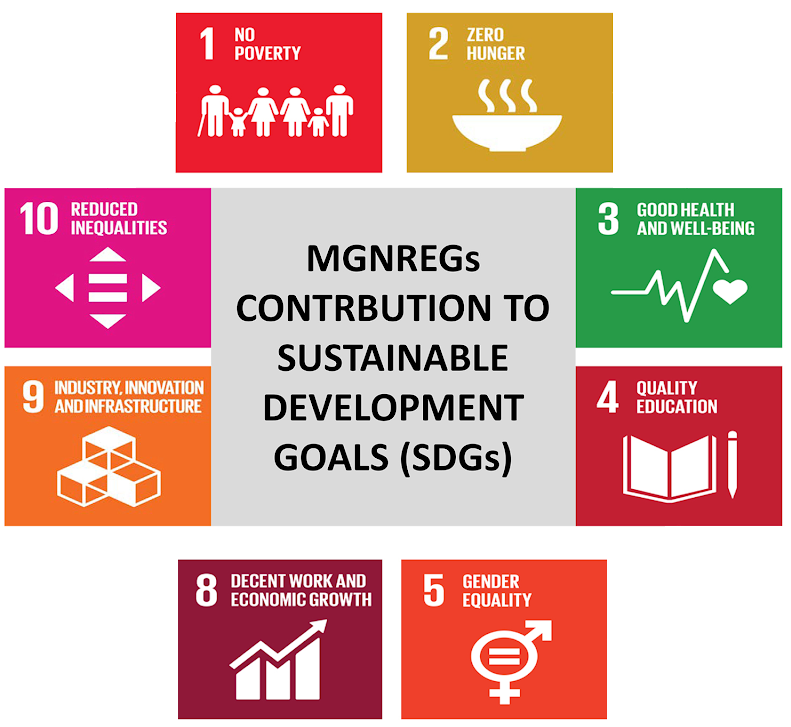MGNREGA (Mahatma Gandhi National Rural Employment Guarantee Act) 2005 is referred to as the ‘Right to Work’ because it legally guarantees 100 days of wage employment per year to every rural household whose adult members are willing to do unskilled manual labor.
Article 41 – Right to Work

Article 41 of the Indian Constitution says that the government should try to give work, education, and help to people who are unemployed, old, sick, or disabled.
- It is a Directive Principle, meaning it is a goal, not a law that can be enforced in court.
- The government is not legally required to provide jobs to everyone, but it should make efforts to do so.
The MGNREGA Act 2005 follows this idea by giving 100 days of guaranteed work to rural people.
Reasons why MGNREGA is called the ‘Right to Work’:
- Legal Guarantee of Employment – It provides a statutory right to employment, making the government responsible for providing work on demand.
- Time-bound Work Provision – If work is not provided within 15 days of demand, the applicant is entitled to an unemployment allowance.
- Livelihood Security – It aims to reduce rural distress by ensuring income for poor households through guaranteed work.
- Decentralized Implementation – Gram Panchayats play a major role in identifying projects and providing work, ensuring local employment opportunities.
- Empowerment of Workers – It provides fair wages and promotes financial inclusion through direct bank transfers.
Because it ensures employment as a legal right rather than as a welfare scheme, MGNREGA is recognized as the ‘Right to Work’ in India.
MGNREGA 2005 Facts

- It guarantees 100 days of paid work per year to rural households.
- The government must provide work within 15 days of request.
- If no work is given, people get an unemployment allowance.
- It helps reduce poverty by providing steady income.
- Local villages (Gram Panchayats) manage the work, creating jobs nearby.
FAQs
→ Any rural household in India can apply for MGNREGA work, provided its adult members (18 years and above) are willing to do unskilled manual labor. The application must be submitted to the local Gram Panchayat, which will issue a job card with details of the applicants.
→ MGNREGA guarantees 100 days of wage employment per financial year to each rural household. In some states, this has been extended to 150 days in case of severe droughts or natural calamities. This work is provided for public infrastructure projects like road construction, water conservation, and rural development.
→ If a person applies for work under MGNREGA and the government fails to provide employment within 15 days, they are entitled to an unemployment allowance. This allowance is paid by the state government, ensuring that people do not suffer financial loss due to lack of work.
→ MGNREGA wages are paid through direct bank transfers or post office accounts linked to the worker’s job card. The payment should be made within 15 days of work completion. The wage rates vary by state and are revised annually by the government.
→ The type of work under MGNREGA is decided by Gram Panchayats based on local needs. Projects usually include road construction, water conservation, irrigation projects, and afforestation. The work aims to create durable community assets and improve rural infrastructure while providing employment.



